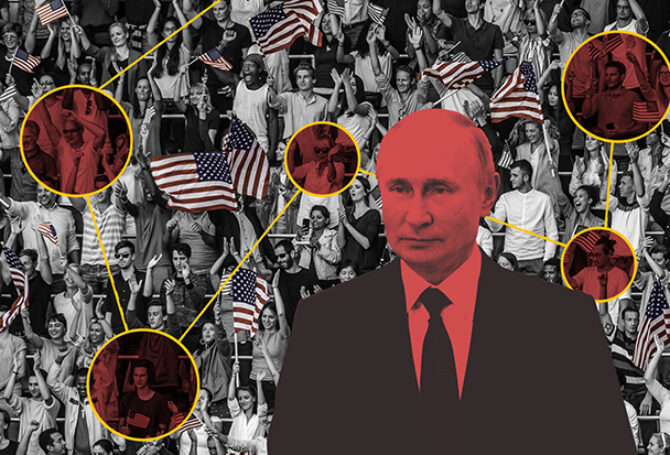
America’s major political parties are pursuing a losing strategy by failing to broaden their appeal and attract new voters, according to Yuval Levin, a senior fellow at the conservative American Enterprise Institute. “Both political parties act like they have too many voters, rather than too few.”
In an opinion piece published in The New York Times, Levin writes, “Neither party does much to expand its appeal or its coalition. Both double down on the voters they can count on, hoping they add up to a slim, temporary majority. If that doesn’t work, they just do it again….For political parties, whose very purpose is to build the broadest possible coalitions, such behavior is malpractice.”

Levin cites the irony of voters increasingly unhappy with both Democrats and Republicans, yet each party fails “to take a hint from its electoral failures” in the form of shifting majorities in Congress. As a result, he says Democrats and Republicans have become minority parties, despite each believing they are on the verge of “winning big”.
“The effects of this flux have been perverse,” Levin contends. “You might think that two minority parties would each feel pressure to expand its coalition and become a majority, but both have behaved as if they were the rightful majorities already. Each finds ways to dismiss the other’s wins as narrow flukes and treat its own as massive triumphs.”
The polarization, deadlock and shifting “majorities” over the last 30 years is the exception, not the rule of governance in the United States. The two-party system has shown itself as durable and reliable, with each party achieving dominance for long stretches of time and majorities shifting with the advent of a new era, such as FDR’s New Deal to combat the Great Depression. The last rudderless period in American history, Levin contends was from 1874-1894 before the emergence of the Progressive Era.
Levin blames the current political predicament on party primaries, news media coverage, caucus leaders who command loyalty and societal polarization.
“Polarization doesn’t have to mean deadlock,” Levin says, “but a long-term pattern of growing negative polarization, in which each party sees the other as the country’s biggest problem, creates incentives for the parties to seek narrower, but ideologically purer wins rather than build broader if less ideologically coherent coalitions.”
Levin sees light through the current dark tunnel of politics. “The pattern isn’t inevitable, and it’s crucial to see that the very closeness of elections blinds politicians to potential ways of breaking out of it.” What needs to change, he explains, is the vain belief by either party that “it’s one election away from power and so sees no reason to change its appeal or to bargain to address the country’s longer-term needs.”
The way out of this self-defeating political box, Levin claims, is straightforward. “Breaking this pattern would have to start by acknowledging a truism: Bigger majorities are possible if politicians seek broader support. That sounds obvious, yet it has eluded our leaders for a generation because it requires seeing beyond our age of deadlock.”
Bigger majorities are possible if politicians seek broader support. That sounds obvious, yet it has eluded our leaders for a generation because it requires seeing beyond our age of deadlock.
Levin offers insight on what political parties could do and not do to cultivate more voters in their ranks. What not to do: “Reach for the center in a shallow ideological sense, let alone hoping swing voters catch up with the priorities of party activists.” What to do: “Take up new questions better rooted in the public’s contemporary concerns — about new sources of financial insecurity and high living costs, threats to parenthood and childhood, dangers of concentrated corporate power, sources of cultural dislocation, perils of internet governance and other challenges that scramble familiar partisan dogmas.”
“Such questions can be answered in right-leaning or left-leaning ways,” Levin says, “but they first need to be asked.”
Republicans must move beyond Reaganism, Levin argues, and some believed Donald Trump would achieve that. However, Levin says, “Mr. Trump’s vile cult of personality only reinforced trench-warfare dynamics. He mostly offered a model of how to squander opportunity: He won independents by six percentage points in 2016 and then lost them by 13 in 2020. That Republicans are even contemplating nominating him again shows they are not attuned to the need to break out of the age of deadlock.”
Levin says some Democratic progressives recognize the alarming “narrowness” of their party’s appeal. Democrats must acknowledge the consistent need to win swing states to secure and retain political dominance, he suggests, “but such arguments can barely be heard over the din of party activists who aggressively alienate potential swing voters with heedless cultural radicalism.”
“Each party is therefore left pursuing a losing strategy and saved from disaster only by the fact that the other party is doing the same,” Levin concludes. “The first to realize that this is not working will face a real opportunity. The party that grasps that it has been losing for a generation will have a chance to make itself the next big winner in our politics.”
So far, there isn’t much evidence that either major political party is paying attention and striving to expand their coalitions.




